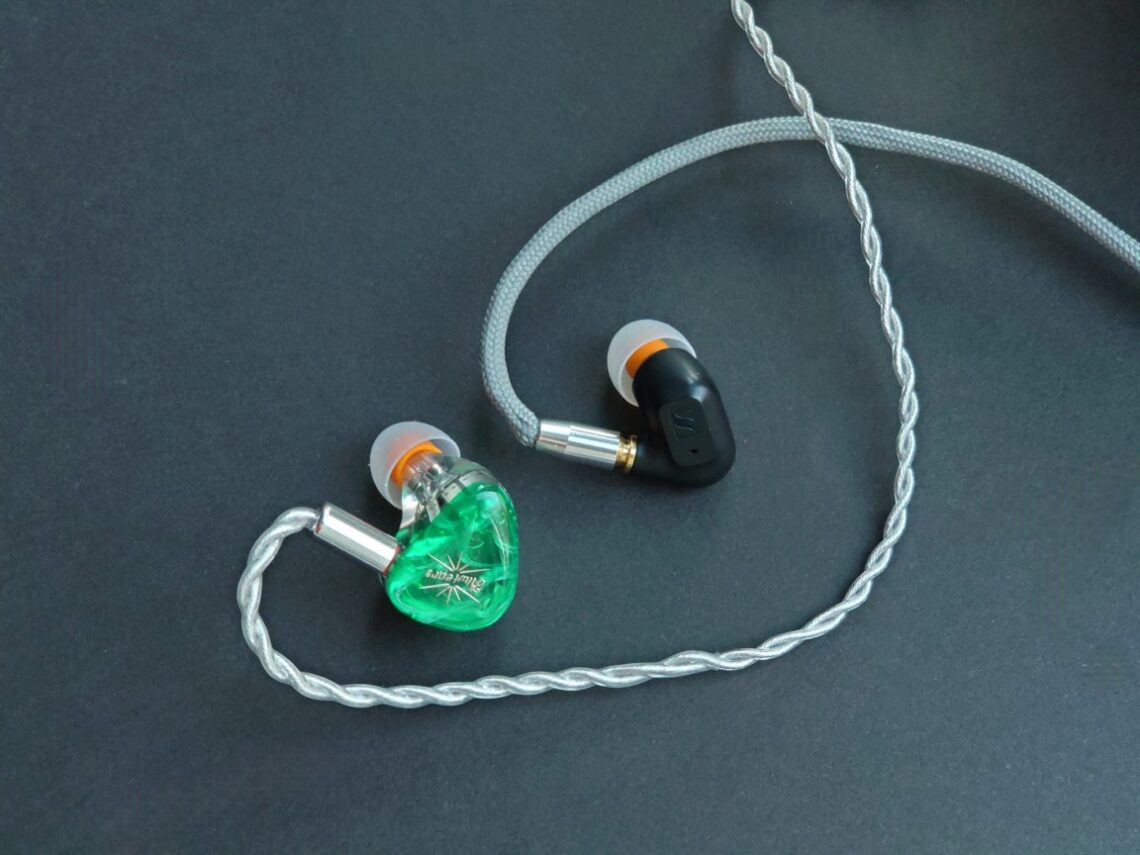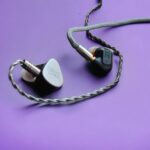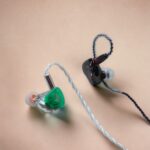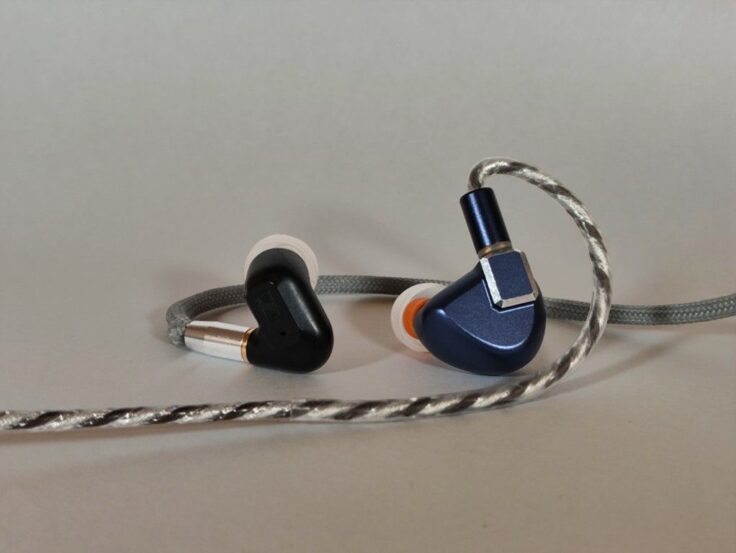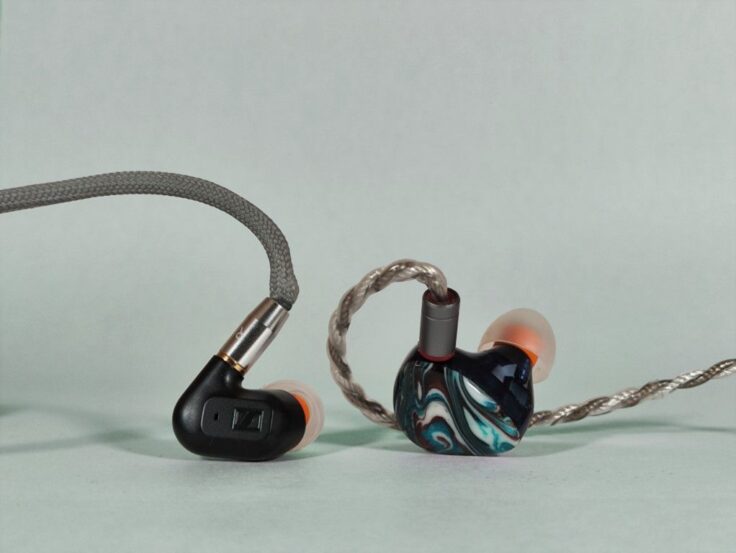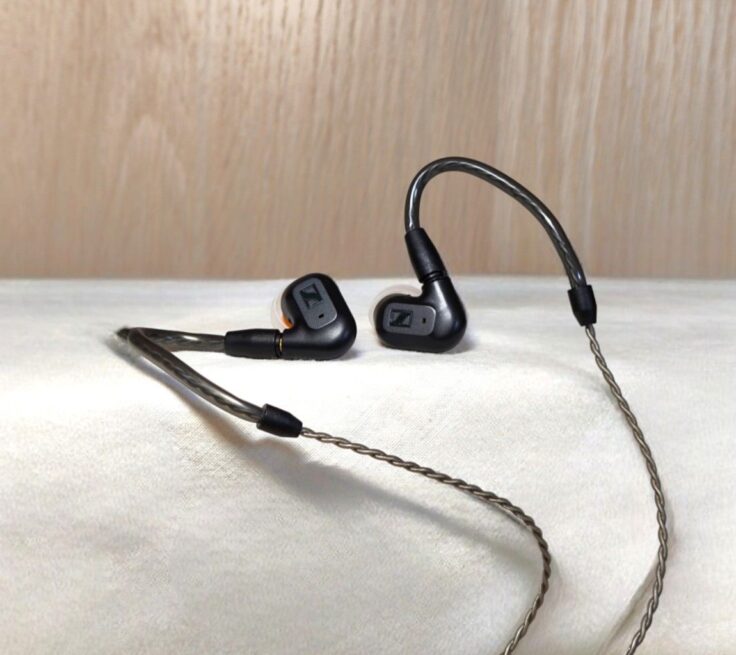These two in-ear monitors are very differently constructed. The Kiwi Ears Orchestra Lite features 8 custom balanced armature drivers: Two ultra tweeters for the treble, four midrange balanced armature drivers for the mids, and two subwoofer drivers for the lows. The Orchestra Lite utilizes a three-way passive crossover.
The Sennheiser IE200 is a small single-driver IEM. It uses the same 7 mm True Response dynamic driver as the IE600 and the IE900, the difference between them lies mainly in the housing material and very importantly how they handle their internal acoustics.
Both the Orchestra Lite and the IE200 are light and fit nicely in the ear. The IE200 is very small and all plastic, Orchestra Lite housing is made of 3D printed medical grade resin. It feels and looks very sturdy. A bit on the bigger side, but the Orchestra Lite is quite light (pun intended).
The Sennheiser uses MMCX connectors but they have opted to add some extra stability rings and thus the plugs are semi-proprietary. The cable rotates easily and I find it a bit fiddly to fit in the ear but when they are in place they feel very nice and are super light. It’s also an issue being 3rd party cables unless you want to cut off the little plastic ring surrounding (like I have done). The cables on my IE200 images are not the stock cable.
The Orchestra Lite uses the widely used 0.78 mm 2-pin connector. It is light for its size and fits very well in the ear. The supplied cables are 3.5 mm terminated on both.
It’s always important to get a good seal, but I find the Orchestra Lite even more picky on the seal than most. My favourite trick is to gently pull my ear back to open the ear canal when inserting the IEM.
IE200 SPECIFICATIONS
- Single dynamic 7mm extra-wideband True Response transducer, the same as in the IE 300, IE 600 and IE 900.
- Frequency range: 6 – 26,000 Hz.
- Impedance: 18 Ohm.
- Sound pressure level: 119 dB.
- 1.2 m MMCX cable.
- 3.5 mm stereo mini jack (angled, gold-plated)
- Braided cable with MMCX connectors and 3.5mm plug
- Adjustable ear hooks and choice of ear tip adapters
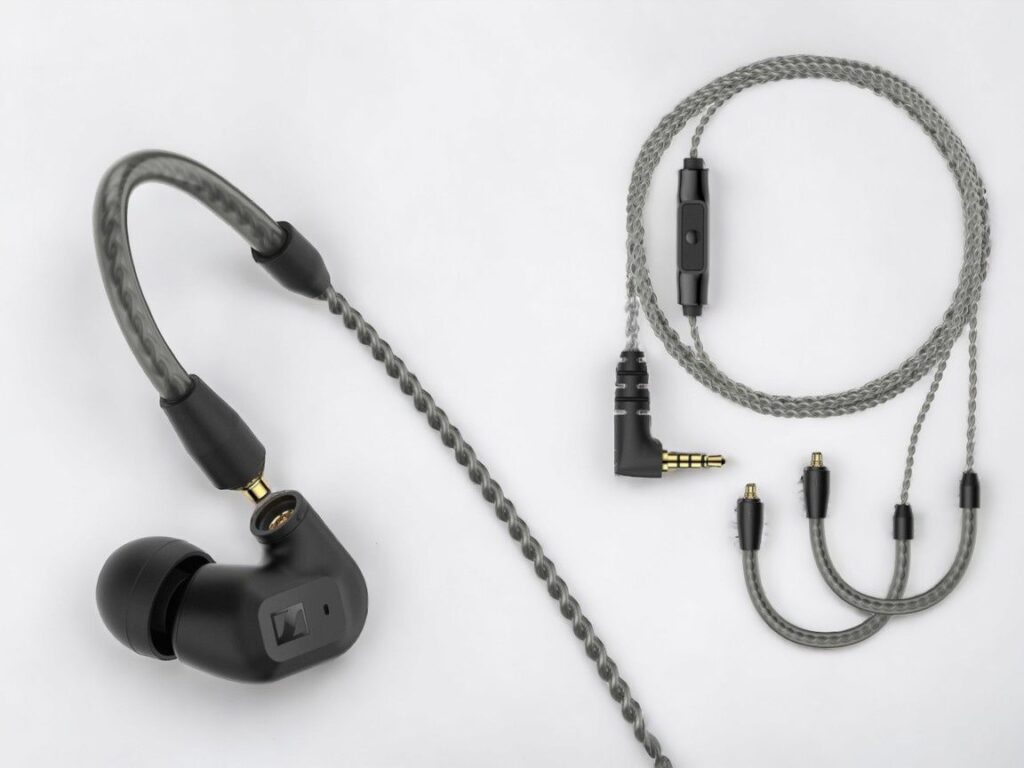
KIWI EARS ORCHESTRA LITE SPECIFICATIONS
- Drivers: Kiwi Ears Customized HI*2+Kiwi Ears Customized MID*4+Knowles LOW*2
- Impedance: 18 ohms
- Sensitivity: 112dB
- Included cable: 1.2 m Detachable 4-core 7N Oxygen-Free Copper OFC Cable,
- Cable plug type amp: 3.5mm
- Cable plug IEM: Detachable 0.78mm 2 Pin
- Tips: Silicon type, 3 sizes
- Carry pouch included
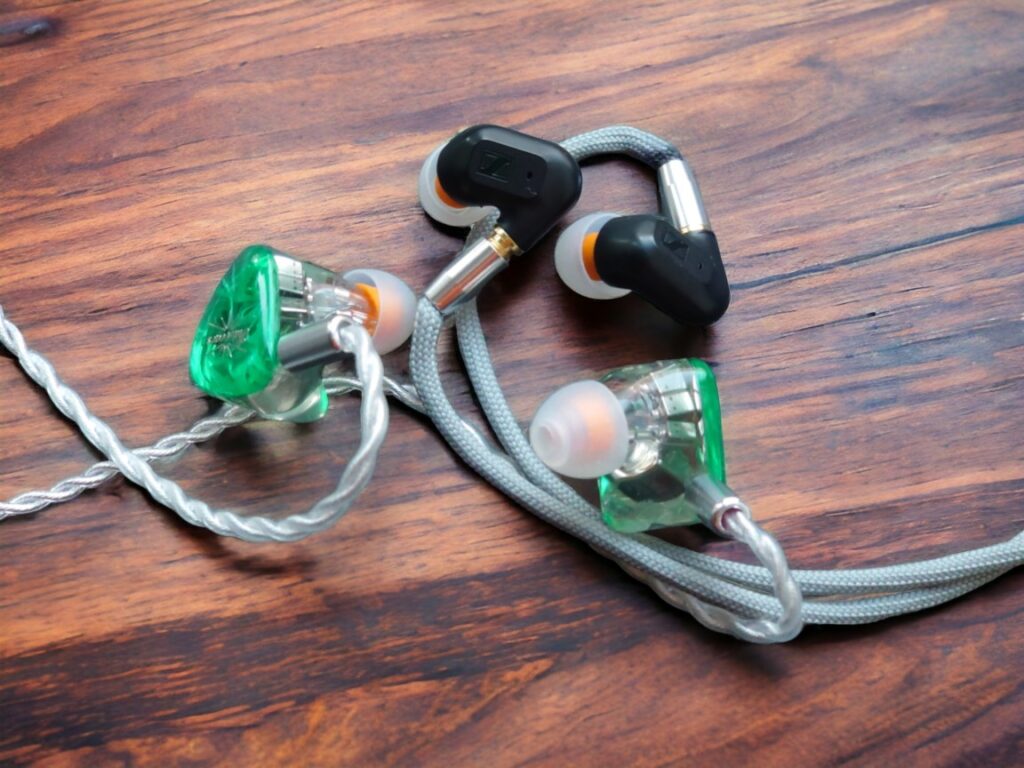
COMPARISONS
Vashkar by Marcin Wasilewski Trio
Beautifully neutral and balanced presentation from the Orchestra Lite. There’s lots of detail, but in a smooth way. The saxophone is very natural sounding. Great dynamics and the percussion is snappy. The soundstage is wide and open.
The IE200 isn’t too different. The saxophone and piano sound a bit fuller and slightly darker, the soundstage is a bit smaller. The bass is fuller and isn’t as snappy and dynamic, but it’s close. Both are very enjoyable.
The Unforgiven by Metallica
This is a track many headphones and IEMs struggle with. It’s hard to get it right and even though it sounds quite good, I think the IE200 is a bit dark and dull. The Orchestra Lite has better separation, definition and dynamics.
The Fall by Ministry
Another noisy track. This sounds rather good on the IE200. The slightly darker presentation is quite nice. However, the Orchestra Lite has better resolution and dynamics. It’s crisper and brighter. There’s more detail than the IE200 offers.
Mahler’s Symphony no 2 by Paavo Järvi
The Orchestra Lite delivers great spaciousness, detail and dynamics, all in an easygoing and slightly rounded way. The IE200 is also a nice listen. It’s smoother and lusher.
Teardrop by Portishead
The IE200 sounds marvellous. The bass is great, the vocals are smooth and enthralling. There’s a nice level separation and the tonal balance is just very right.
The Orchestra Lite sounds quite different. There’s a bit less bass and everything sounds a little brighter and crisper. There’s more detail and better separation, more clarity, better articulation. However, I must say I really like the IE200’s way a bit more here. It just sounds right and delicious.
Scratch Bass by Lamb
The IE200 has quite a bit more bass. It’s fuller sounding, darker and lusher. It does suit this track well. The Orchestra Lite is again better at separation, detail, articulation. It sounds brighter and snappier.
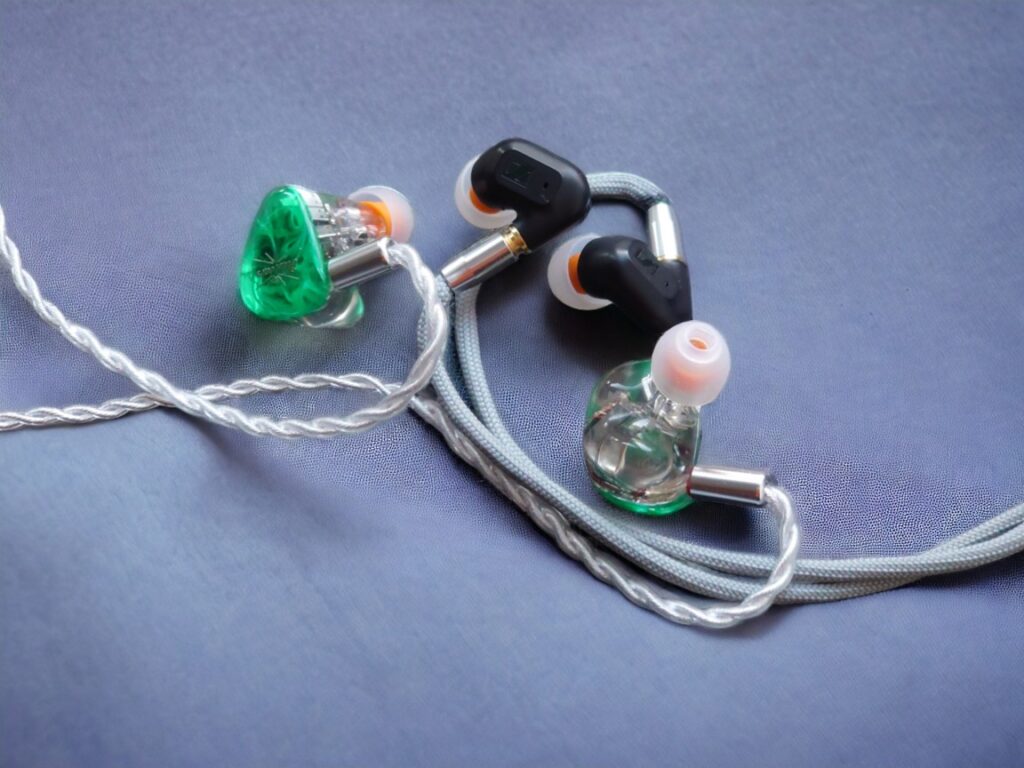
CONCLUSION
In terms of sound signature, the Orchestra Lite is crisper and brighter, the IE200 is darker and lusher. The soundstage is bigger with the Orchestra Lite. It is generally also more dynamic and detailed.
The treble is clearer and more articulate with the Orchestra Lite, it’s smoother with the IE200. The mid-range is warmer, thicker and sweeter with the IE200, while it’s clearer and a little brighter with the Orchestra Lite. The bass has more quantity with the IE200, while it’s tighter with the Orchestra Lite.
Both of them sound natural and organic with a nice timbre. All in all, the Orchestra Lite is more neutral and technically precise. The IE200 has some extra smoothness and warmth.
These are both great IEMs with different characters. The Orchestra Lite is significantly more expensive, but you get a better technical performance for your money. For some, however, the smoothness of the IE200 is just what they’re after, albeit that the detail level suffers a bit.
But on Linsoul: Kiwi Orchestra Lite
Buy on Amazon: Kiwi Ears Orchestra Lite
Buy on Amazon: Sennheiser IE200
We make earnings through affiliate links and any purchase you make on Amazon or Linsoul clicking one of our links will give us a small provision at no cost to you.
We only get a provision for items that are not returned, so there’s no incentive for us to recommend something that’s not good.
Linsoul : Headphones, Earbuds, Wireless Earbuds, Desktop DAC/AMP, Portable DAC/AMP, Digital Audio Players,
Amazon: Headphones, IEMs, Headphone Amplifiers, Home Audio or Anything else.
.
If you enjoyed this article or other content on The Headphoneer, you might consider leaving a small donation to keep this website up and running. No donation is too small. Thanks for supporting us!
If you like our work please follow us on Instagram, Facebook and Twitter , it will help us grow. Sharing is caring 🙂


